The 5 Types of Meeting Notes You Absolutely Need to Know
- Discover the pros and cons of the 5 most commonly used types of meeting notes.
- Choose the right format for each meeting to improve communication and decision-making.
- Unlock your team’s potential and boost productivity.
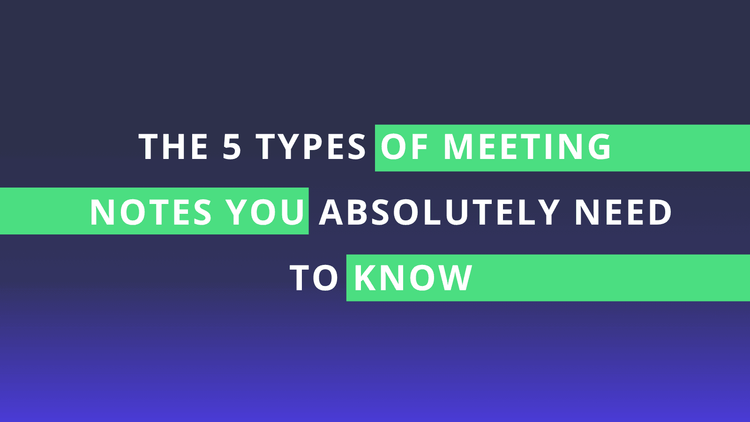
Meetings are the beating heart of decisions, exchanges, and strategic directions within organizations. But without written records, these key moments can quickly fade away. That’s where meeting notes come in: a tool for follow-up, communication, and transparency.
However, not all meeting notes are alike. There are several formats, each with its own objectives, level of detail, and writing style. Here are the 5 most commonly used types of meeting notes, along with their specificities, advantages, and use cases.
1. The Full Transcript: The Raw Version of the Discussion
The full transcript, also called the verbatim, is the complete, literal transcription of everything said during the meeting. No words are changed, omitted, or rephrased. It is the raw memory of the exchanges.
🔸 Characteristics:
- Includes every detail of spoken language: hesitations, repetitions, interruptions, grammar mistakes, speech tics.
- Strictly follows the chronological order of interventions.
- Requires audio or video recording to ensure content accuracy.
- Can run to several dozen pages for meetings lasting a few hours.
🔸 **Advantages:
- Provides total transparency: anyone can check exactly what was said, when, and in what context.
- Avoids any personal interpretation by the note-taker: statements are presented as-is.
🔸 **When to use it?
This format is essential when absolute neutrality and completeness are required: in board meetings, legal proceedings, or research interviews. It is often used in the legal, academic, or journalistic fields.
🔸 **Limitations:
- Very dense document, sometimes hard to read and use.
- Time-consuming to transcribe and review.
- Not suitable for operational use or a wide audience.
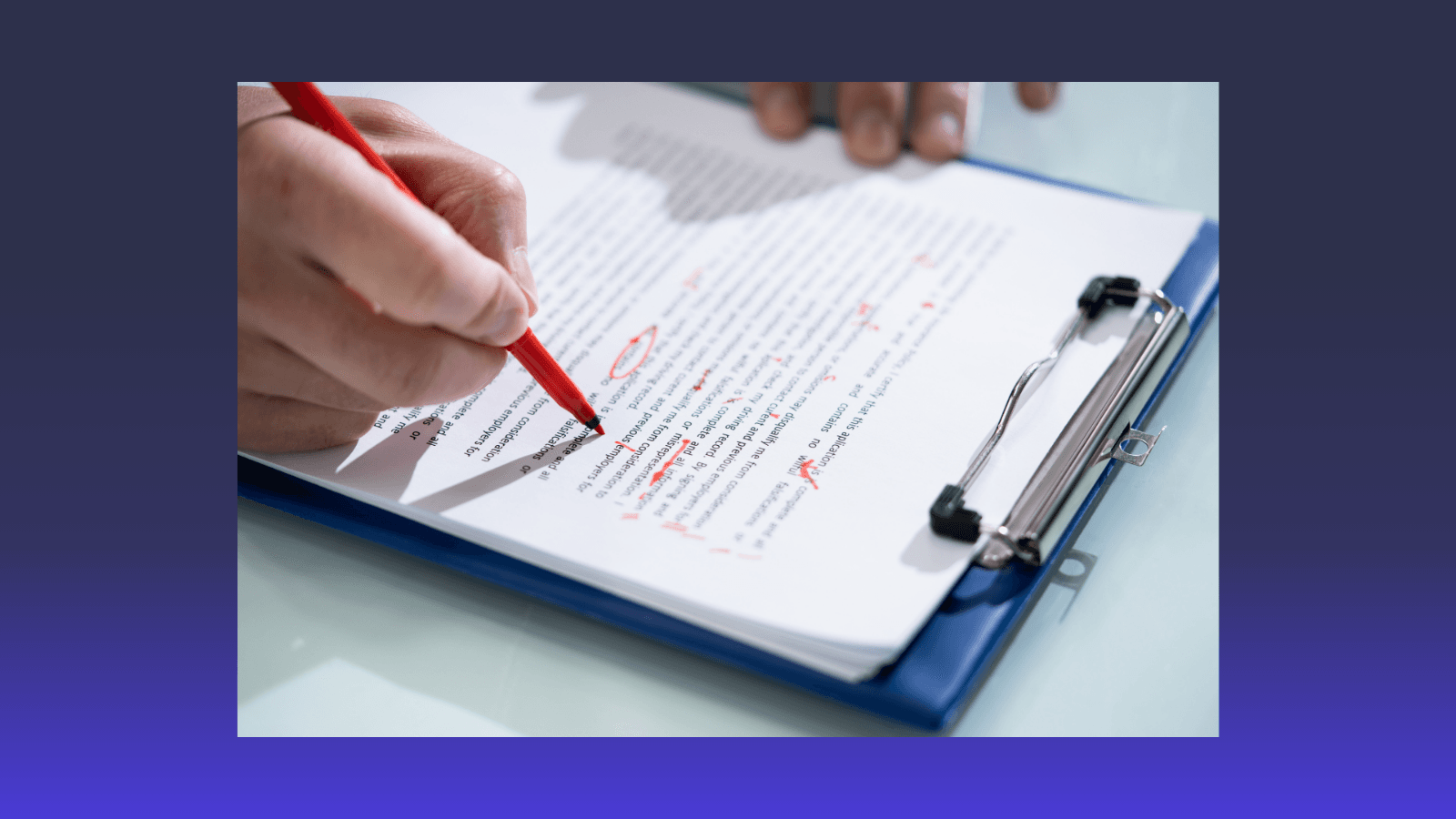
2. The Detailed Summary: Complete but Optimized
The detailed summary is a more readable version of the verbatim. It keeps all the useful content of the meeting but removes unnecessary elements. The goal: faithfully reflect the discussion without overloading the reader.
🔸 **Characteristics:
- Filters out digressions, repetitions, hesitations, and trivial comments.
- Maintains the chronology and logical structure of the meeting.
- Includes all important ideas and significant exchanges.
- May include quotations if needed, always aiming for clarity.
🔸 **Advantages:
- Provides a complete and organized view of the meeting.
- Makes discussions accessible without sacrificing accuracy.
- Useful for attendees and absentees alike.
🔸 **When to use it?
Recommended for long meetings with multiple speakers and strategic decisions: steering committees, project reviews, cross-department meetings, etc.
🔸 **Limitations:
- Requires good synthesis skills to filter essentials without altering meaning.
- Less formal than official minutes.
- Can be time-consuming if the meeting is very content-rich.

3. The Edited Report: Clear, Concise, and Accurate
The edited report is a rephrased and structured version of the discussions. The goal is to keep the content while improving the form. It is not a summary but a smooth rewrite designed for easy reading.
🔸 **Characteristics:
- Captures key ideas with clear and fluid writing.
- Rewords spoken contributions into professional written language.
- Removes oral awkwardness, syntax errors, and repetitions.
- Organizes content logically, with headings and subheadings if needed.
🔸 **Advantages:
- Very pleasant to read, even for non-attendees.
- Suitable for wide distribution (employees, partners, management).
- Respects content without weighing down the form.
🔸 **When to use it?
Ideal for team meetings, HR interviews, technical committees, or any meeting where you want to report clearly without overload. Perfect for smooth internal use.
🔸 **Limitations:
- Requires good understanding of discussions to avoid distorting meaning.
- May lack details for highly technical subjects.
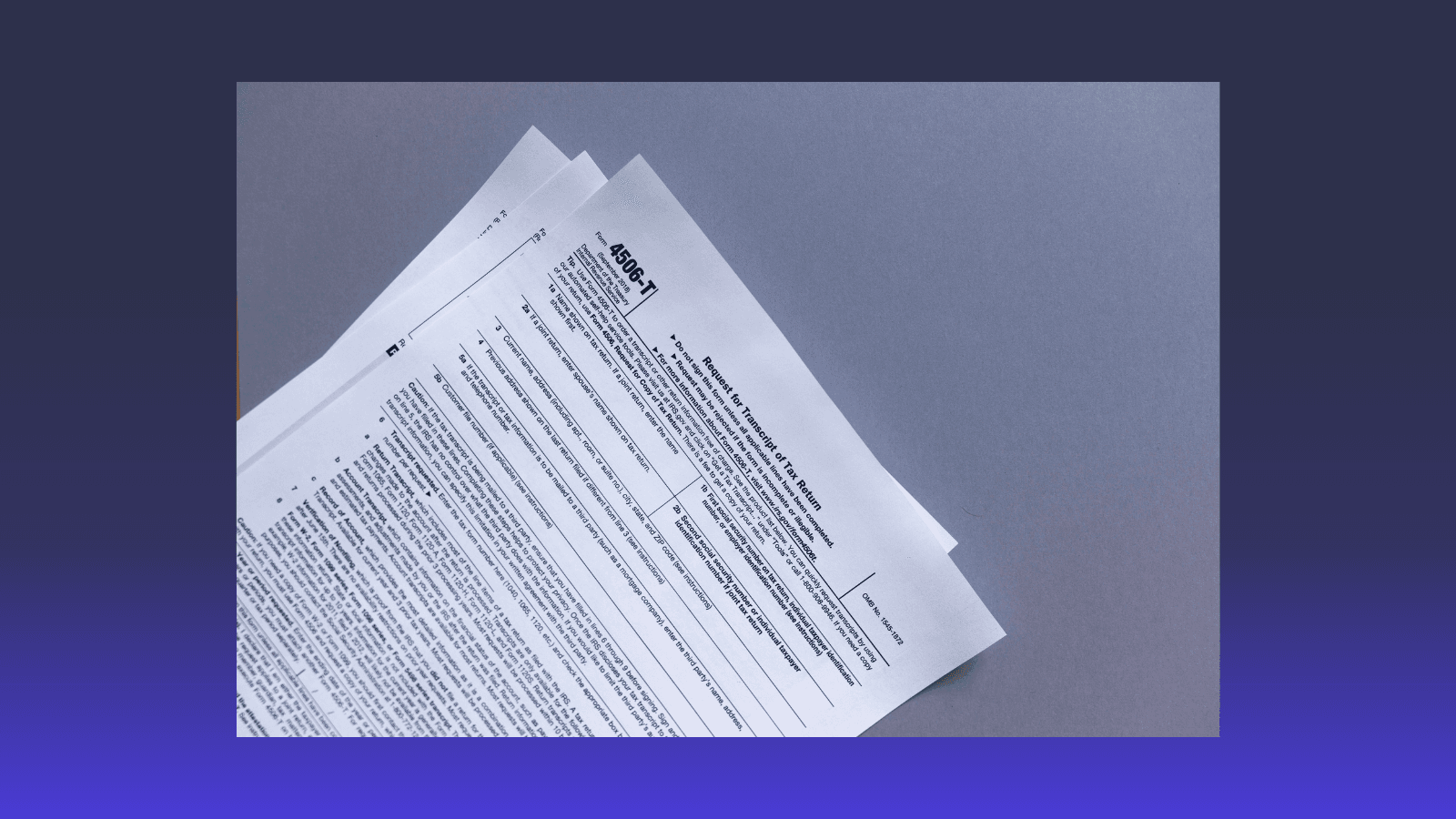
4. The Meeting Summary: Quick and Action-Oriented
The summary is a condensed version of the key points, decisions made, and next steps. It is a short, impactful document designed to be immediately actionable.
🔸 **Characteristics:
- Written in a direct style, structured around outcomes.
- Often presented as bullet points or tables.
- May include an action checklist with responsible persons and deadlines.
- Organized by topic or agenda order.
🔸 **Advantages:
- Very quick to read and understand.
- Ideal for decision-making, delegation, or operational follow-up.
- Perfect to inform absent team members.
🔸 **When to use it?
Perfect for recurring meetings, weekly check-ins, management committees, or workshops. Also effective for external reports (clients, partners, providers).
🔸 **Limitations:
- Does not allow revisiting discussion details.
- May omit important nuances or disagreements.

5. The Official Minutes: The Legal Document Par Excellence
The official minutes are a legal and regulatory document. They follow a strict format and serve as legal proof of decisions made during meetings.
🔸 **Characteristics:
- Written in a formal style, sometimes legally regulated.
- Includes: date, time, place, list of participants, agenda, debate content, decisions voted on, voting results, signatures.
- May require approval and validation at the next meeting.
- Must be archived according to precise rules.
🔸 **Advantages:
- Serves as an official document for shareholders, partners, or authorities.
- Can be used in disputes or audits.
- Provides undeniable traceability of decisions.
🔸 **When to use it?
Mandatory in many cases: general assemblies, works council meetings, statutory meetings, or board meetings.
🔸 **Limitations:
- Rigid style, not engaging to read.
- Very demanding in terms of drafting, often legally constrained.
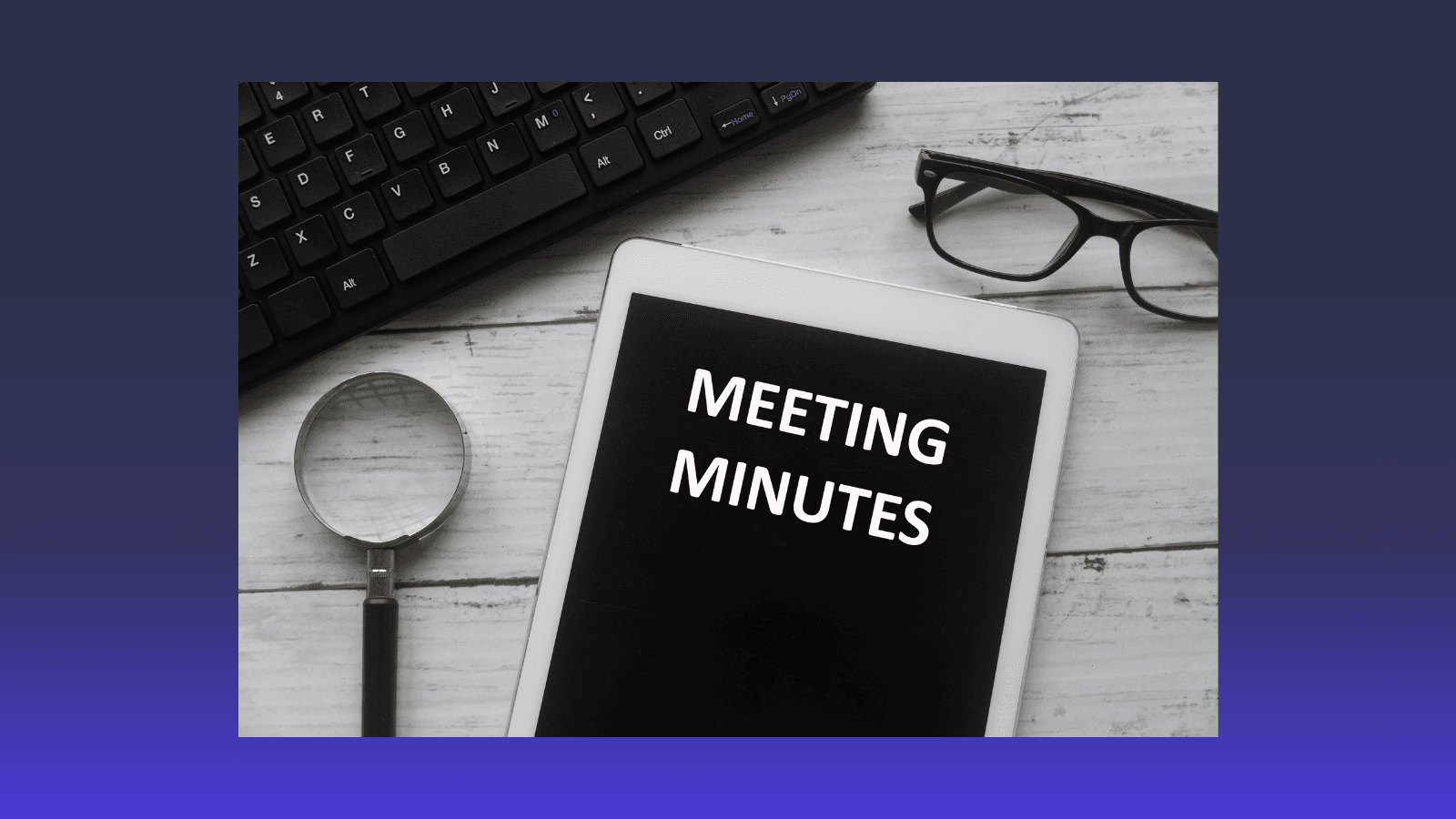
Leexi, Your Partner for All Your Meeting Notes
🛠️ Need help with your meeting notes? Leexi is here to make your life easier. No matter which format you choose — detailed verbatim, fluid report, quick summary, or official minutes — our team handles everything for you.
🎙️ Thanks to our tools and expertise, we capture your discussions, filter the essentials, and deliver a clear, well-structured document tailored to your needs. Whether you want an accurate record, a strategic summary, or to comply with legal requirements, Leexi saves you time without sacrificing quality.
💼 The bonus? No need to choose between accuracy, readability, and speed: we manage it all for you, with rigor and flexibility.
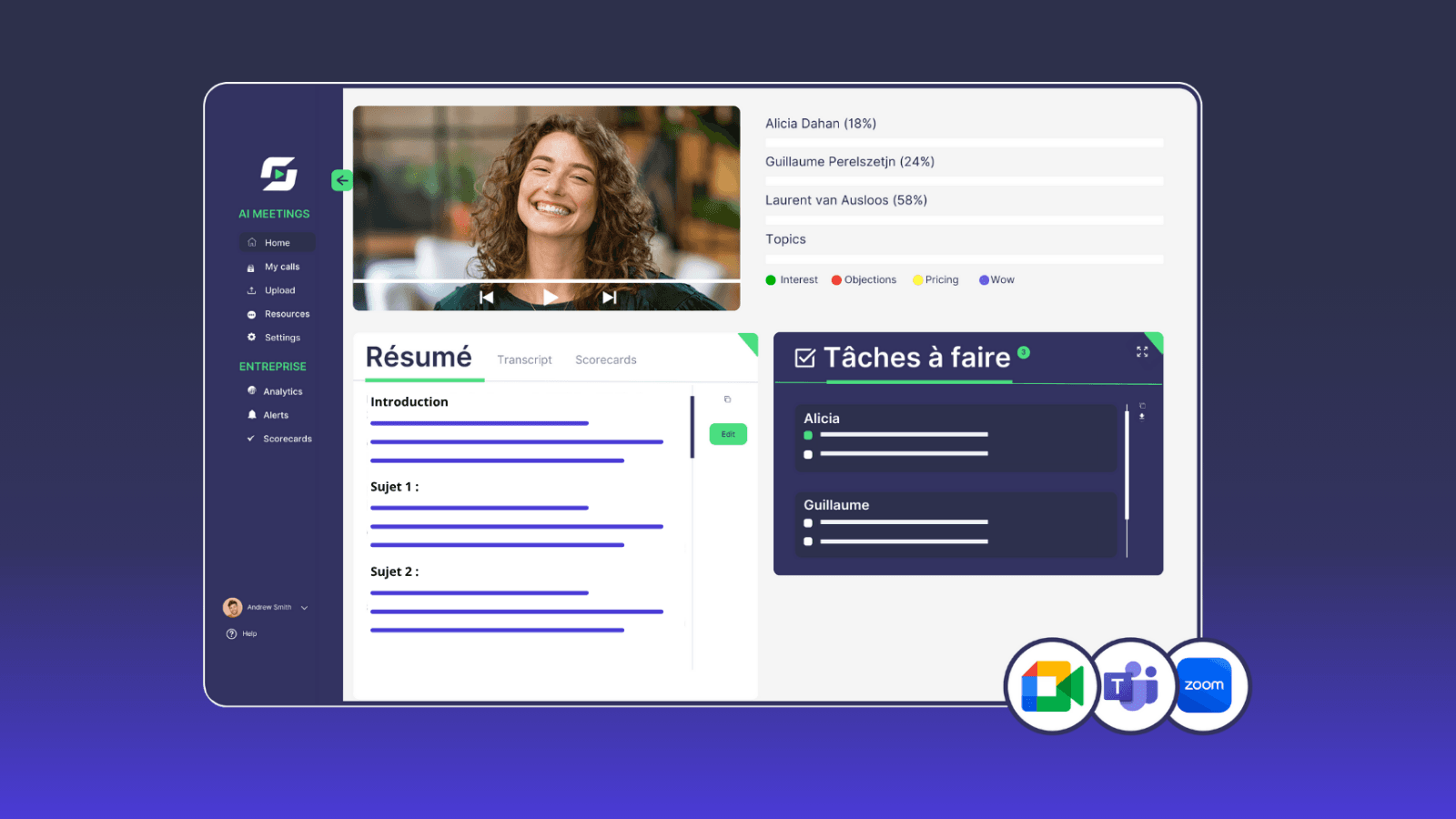
Conclusion: Choosing the Right Format Means Better Communication
Mastering the different types of meeting notes means choosing more effective, tailored, and impactful communication. From precise verbatim to formal minutes, to actionable summaries, each format has its place in your organization.
📝 The key tip? Define the purpose of the notes in advance: is it to keep a legal record? To inform quickly? To formalize decisions? Once that’s clear, the choice of format becomes obvious.
Ready to boost your productivity with Leexi?
Leexi AI Notetaker takes notes for you